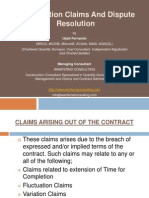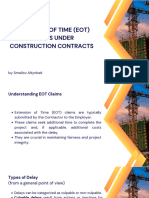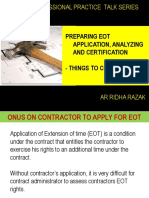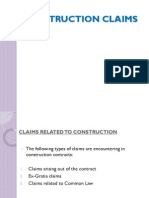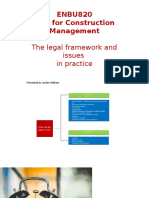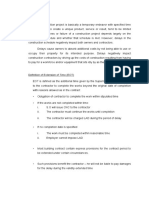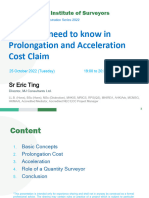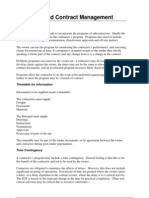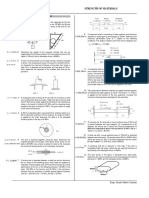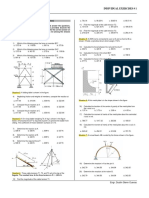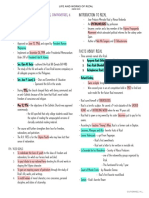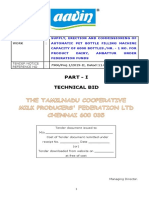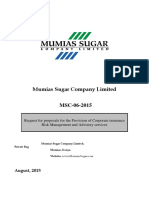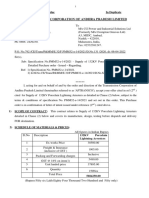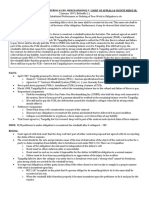0% found this document useful (0 votes)
59 views25 pagesEOT Claims: A Student's Guide
The document discusses extension of time (EOT) claims, which allow contractors to request additional time to complete a project due to delays outside of their control. It outlines valid reasons for EOT claims such as weather, pandemics, or owner-caused delays. While contractors typically only receive a time extension, not compensation, the document provides tips for contractors to successfully document costs associated with delays when pursuing an EOT claim. It emphasizes properly notifying the owner, maintaining schedules, and fully documenting the delay and its impacts.
Uploaded by
HONEY LYN GUTIERREZCopyright
© © All Rights Reserved
We take content rights seriously. If you suspect this is your content, claim it here.
Available Formats
Download as PDF, TXT or read online on Scribd
0% found this document useful (0 votes)
59 views25 pagesEOT Claims: A Student's Guide
The document discusses extension of time (EOT) claims, which allow contractors to request additional time to complete a project due to delays outside of their control. It outlines valid reasons for EOT claims such as weather, pandemics, or owner-caused delays. While contractors typically only receive a time extension, not compensation, the document provides tips for contractors to successfully document costs associated with delays when pursuing an EOT claim. It emphasizes properly notifying the owner, maintaining schedules, and fully documenting the delay and its impacts.
Uploaded by
HONEY LYN GUTIERREZCopyright
© © All Rights Reserved
We take content rights seriously. If you suspect this is your content, claim it here.
Available Formats
Download as PDF, TXT or read online on Scribd
/ 25



